A leather couch can instantly elevate your living space with its rich texture and timeless appeal. Yet over time, it can begin to trap unpleasant smells from pets, food, or everyday use. Learning how to remove odor from leather couch properly will not only restore freshness but also protect the integrity of the material. With the right techniques and gentle cleaning solutions, you can safely deodorize your couch without causing damage. This guide walks you through the entire process — from simple cleaning to deep deodorizing — so you can enjoy your luxurious leather furniture again with confidence.
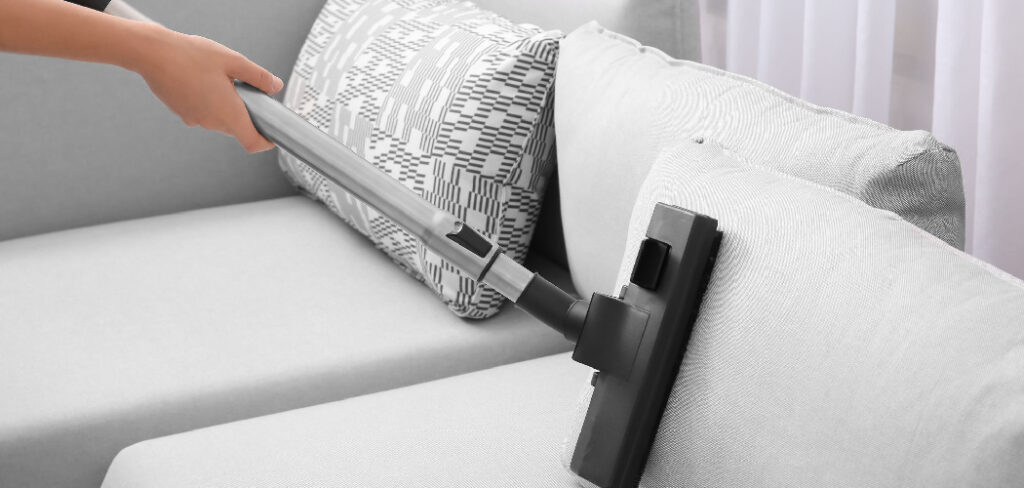
The Benefits of Removing Odor from Leather Furniture
Keeping your leather couch clean and odor-free isn’t just about appearances — it directly affects the comfort and health of your home environment. A fresh-smelling couch:
- Makes your living area more welcoming and relaxing.
- Prevents bacteria, mildew, and mold from developing in the leather’s pores.
- Extends the life of your furniture by preserving its oils and finish.
- Enhances indoor air quality, reducing allergens and musty smells.
- Protects your investment and maintains the sofa’s resale value.
By removing odors, you’re not only refreshing the scent but also preventing the buildup of substances that can weaken or discolor the leather over time.
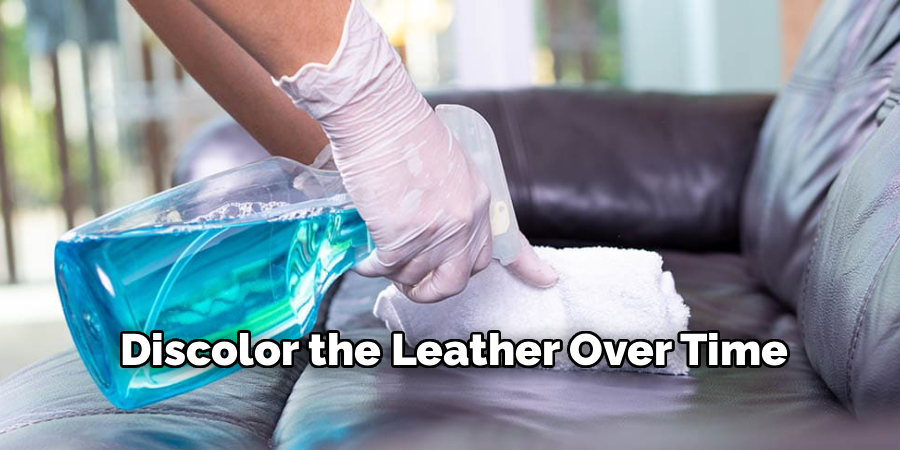
Tools and Materials You’ll Need
- Soft microfiber cloths (at least 3–4)
- Vacuum cleaner with a soft brush attachment
- Distilled water
- Mild pH-neutral soap (like saddle soap or gentle dish soap)
- White vinegar
- Baking soda
- A small bowl for mixing cleaning solutions
- Spray bottle (optional)
- High-quality leather conditioner
- Activated charcoal (optional for strong odors)
Step-by-Step Guide: how to remove odor from leather couch
Step 1: Vacuum the Couch Thoroughly
Begin by clearing away loose debris, pet hair, and crumbs — all of which can hold onto odor molecules. Use a vacuum with a soft brush attachment to avoid scratching the surface. Move carefully over the cushions, seams, and folds, paying close attention to crevices where dirt collects. If your cushions are removable, lift them to vacuum beneath and around the frame. This step is essential because trapped particles contribute to smells and can grind into the leather during cleaning. Take your time — a spotless surface ensures the deodorizing process works more effectively later on.
Step 2: Wipe Down the Surface with a Gentle Soap Solution
Next, mix a small amount of mild, pH-neutral soap into distilled water. Dampen a microfiber cloth, wringing out excess liquid until it’s just slightly moist. Wipe the couch in small circular motions, working section by section. This will lift away grease, dirt, and surface residues that often carry odors. Immediately follow with another cloth dampened in plain distilled water to remove any soap traces. Finally, use a dry cloth to pat the surface dry. Avoid oversaturating the leather — too much moisture can leave stains or damage its protective finish.
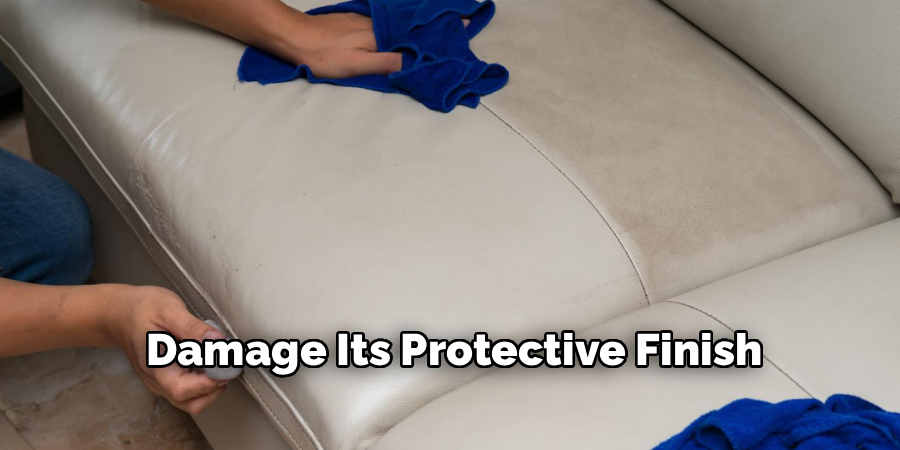
Step 3: Deodorize Using a Vinegar Solution
White vinegar is a natural deodorizer that neutralizes odors without leaving chemical residues. Mix equal parts white vinegar and distilled water in a spray bottle. Lightly mist a soft cloth (never the leather directly) and gently wipe the couch’s surface. The vinegar smell may seem strong at first but will dissipate as it dries, taking unwanted odors with it. Always test a small, hidden spot before applying to ensure your couch’s dye or finish isn’t affected. This natural solution effectively breaks down odor-causing bacteria embedded in the leather pores.
Step 4: Apply Baking Soda for Deep Odor Absorption
For odors that linger, baking soda works wonders. Once your couch is dry from the vinegar step, sprinkle a thin, even layer of baking soda over the cushions and arms. Let it sit for several hours — overnight is best for strong smells. Baking soda absorbs moisture and neutralizes deep-set odors from pets or smoke. Afterward, vacuum the entire couch using your brush attachment to remove all powder. Be gentle around seams to avoid leaving any residue behind. This simple method provides long-lasting freshness without harsh chemicals.
Step 5: Let the Couch Air Out Naturally
Proper ventilation plays a huge role in odor removal. Open windows and use fans to circulate air around the couch. If your cushions are removable, stand them upright to allow airflow on all sides. For best results, leave the couch in a well-ventilated room for several hours. Never place it in direct sunlight, as UV rays can dry and crack leather. The airflow not only removes lingering cleaning scents like vinegar but also ensures that any remaining moisture evaporates, preventing mold or mildew from forming.
Step 6: Condition the Leather for Restoration
After cleaning and deodorizing, leather can lose some of its natural oils. To restore its softness and luster, apply a high-quality leather conditioner. Use a clean cloth to rub a small amount into the surface using circular motions. Allow the conditioner to absorb for about 30–60 minutes, then buff with a dry cloth to reveal a natural sheen. Conditioning keeps the material supple, prevents cracking, and adds a light protective layer that helps resist future odor absorption. Regular conditioning (every 3–6 months) keeps your couch looking and smelling new.
Step 7: Refresh with Activated Charcoal (Optional)
If you’re still noticing persistent smells — especially from smoke or pets — activated charcoal is your best defense. Place a few charcoal packets around and under the couch, or if the cushions are removable, tuck them inside a sealed bag with a few packets for 24–48 hours. The charcoal will absorb lingering odors naturally without touching the leather. This method is excellent for long-term maintenance too — simply keep a few packets hidden under your sofa to maintain consistent freshness.
Customization Tips
Every leather couch reacts differently to cleaning solutions based on its finish and age.
- For unfinished or aniline leather, always test solutions first and use minimal moisture.
- If your couch often faces pet accidents, pre-treat the area with an enzymatic cleaner before general deodorizing.
- For a soft scent afterward, avoid sprays — instead, tuck a lavender sachet or cedar block under the cushions.
- Re-condition regularly to retain the leather’s flexibility and resistance to odors.
Small personalized touches like these help maintain both the beauty and longevity of your furniture.
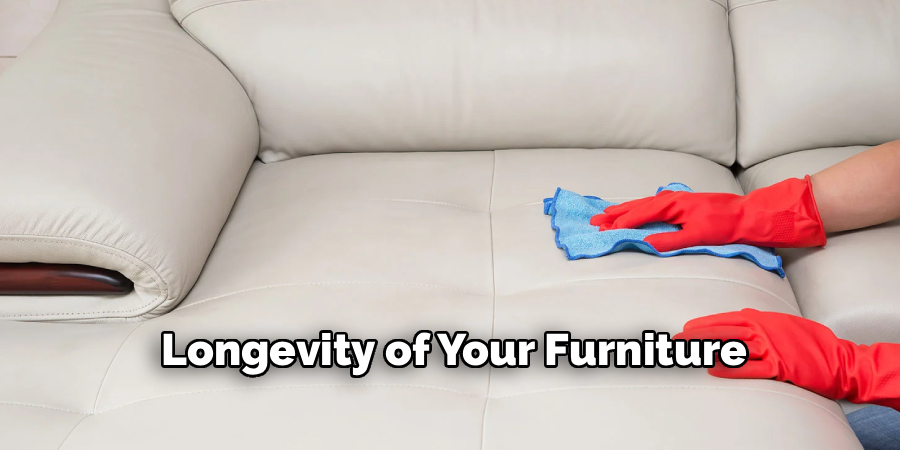
Common Mistakes to Avoid
- Using Harsh Chemicals like bleach, ammonia, or alcohol cleaners — they can strip the color and damage the leather’s finish.
- Skipping the Spot Test — every leather type reacts differently; always test before cleaning visible areas.
- Over-wetting the Leather — excessive moisture can cause water stains or mold inside the cushions.
- Neglecting Conditioning after cleaning — without moisture replenishment, the leather can dry out and crack.
Avoiding these mistakes ensures safe, long-lasting results and helps your couch stay odor-free without damage.
Frequently Asked Questions
How do I get rid of smoke smell from a leather couch?
Start by wiping the leather with a vinegar-water solution, then sprinkle baking soda over the surface overnight to absorb deep odors. Vacuum it off the next day and condition the leather. For heavy smoke, place activated charcoal nearby to continuously absorb airborne smells.
Can I use baby wipes or all-purpose cleaners on leather?
No. Baby wipes and multipurpose cleaners often contain alcohol or harsh surfactants that dry out or discolor leather. Always use pH-balanced, leather-safe products to maintain the couch’s finish and flexibility.
Will vinegar damage my leather couch?
When diluted properly and used sparingly, vinegar is safe for most finished leathers. Always test on a small area first and never soak the material. Follow up with conditioner to restore moisture after cleaning.
What’s the best way to keep my leather couch smelling fresh long-term?
Regular maintenance is key.
- Vacuum weekly to remove dust and debris.
- Wipe with a damp cloth every few weeks.
- Condition every 3–6 months.
- Keep the area well-ventilated and avoid smoking near the couch.
These habits prevent odors before they set in.
How can I remove pet odor specifically?
Act fast. Blot the affected spot immediately and use an enzymatic cleaner safe for leather. These break down organic odor molecules. After cleaning, wipe with distilled water and dry thoroughly, then apply conditioner. Regular deodorizing with baking soda or charcoal will help prevent recurring smells.
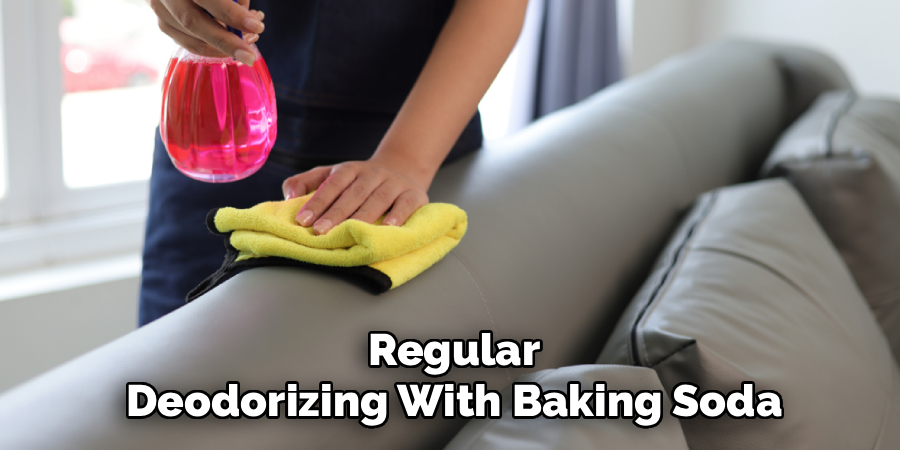
Conclusion
Learning how to remove odor from leather couch ensures your furniture stays as luxurious and inviting as the day you bought it. By following these simple steps — vacuuming, wiping, deodorizing, and conditioning — you can safely eliminate smells and rejuvenate your sofa. Remember:
- Always test products on hidden areas first.
- Use natural, leather-safe cleaners.
- Re-condition regularly to preserve softness and prevent future odor buildup.
Your couch will not only look stunning but also smell clean and fresh, making it the true centerpiece of your living space once again.

About
Emmett Finn is a distinguished figure in the world of Diy design, with a decade of expertise creating innovative and sustainable Diy solutions. His professional focus lies in merging traditional craftsmanship with modern manufacturing techniques, fostering designs that are both practical and environmentally conscious. As the author of diy, Emmett Finn delves into the art and science of furniture-making, inspiring artisans and industry professionals alike.
Education RMIT University
(Melbourne, Australia) Associate Degree in Design (Emmett Finn) Focus on sustainable design, industry-driven projects, and practical craftsmanship. Gained hands-on experience with traditional and digital manufacturing tools, such as CAD and CNC software.
Nottingham Trent University
(United Kingdom) Bachelor’s in diyfastly.com and Product Design (Honors) Specialized in product design with a focus on blending creativity with production techniques. Participated in industry projects, working with companies like John Lewis and Vitsoe to gain real-world insights.
Publications and Impact
In diy, Emmett Finn his insights on indoor design processes, materials, and strategies for efficient production. His writing bridges the gap between artisan knowledge and modern industry needs, making it a must-read for both budding designers and seasoned professionals.
